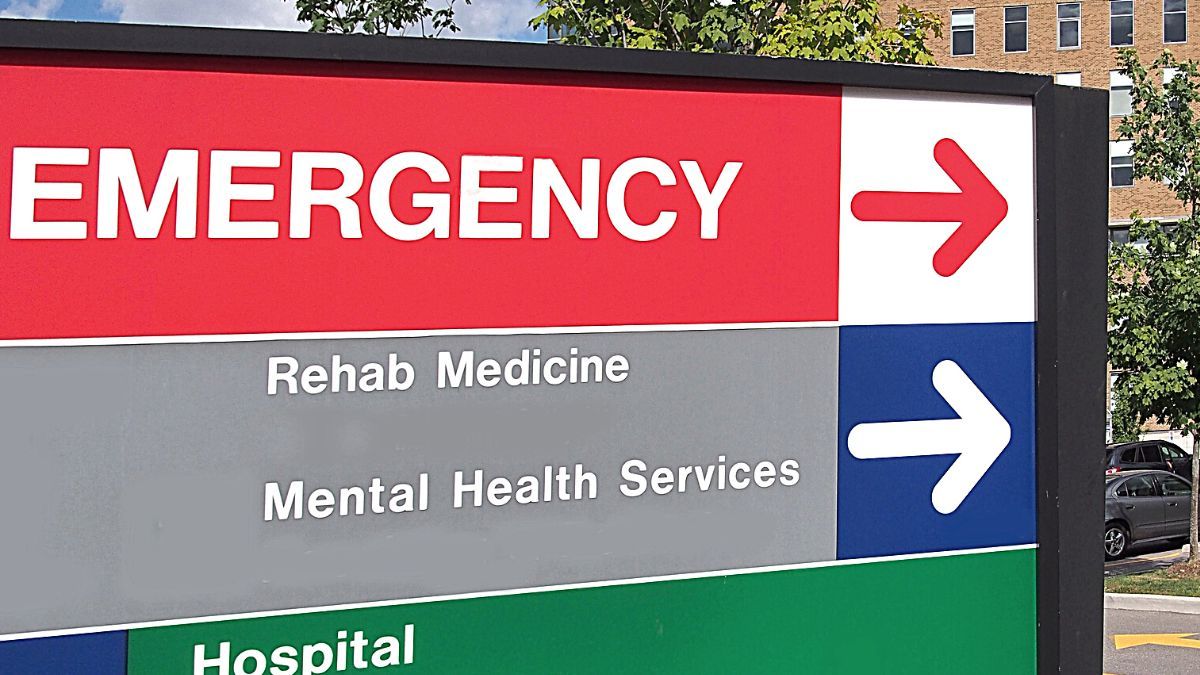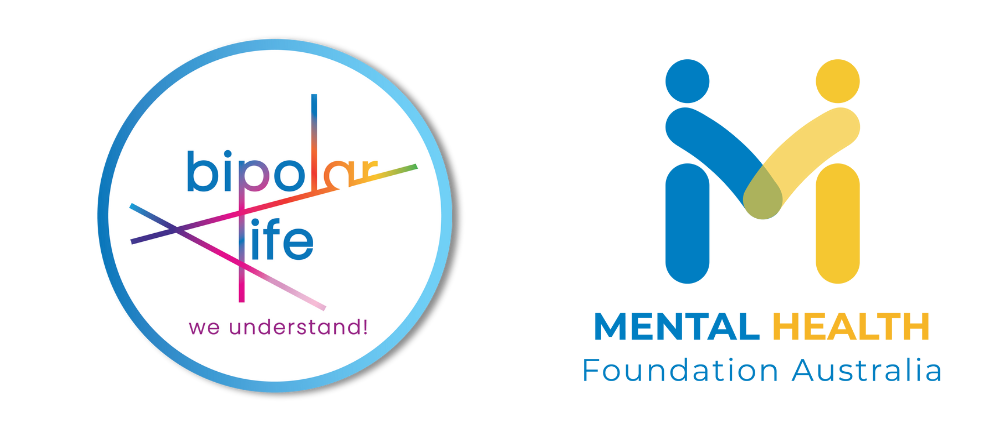PSYCHIATRIC HOSPITAL ADMISSION AND DISCHARGE

Even if you do your best to lead a healthy lifestyle and follow your prescribed treatment plan, unfortunately hospitalisation may still be necessary. Around one in ten psychiatric admissions are for bipolar disorder [1], with depression and schizophrenia being the most common reasons.
In this article we’ll explore why admission might be helpful, what to expect during your stay, and how to transition being back to living at home after discharge.
WHAT TO EXPECT
Some people may be nervous or frightened about an impending hospital stay, whereas others may actively wish to be admitted for relief of distressing symptoms.
Either way, it is important to remember that the benefits of admission can include [2]:
- Having a safe place to rest (particularly important if manic or mixed state, or suicidal), with staff available for 24/7 support
- Having more time to managing your mental health away from other responsibilities
- Being away from possible stressors at home and/or work
- Having access to a psychiatrist most days (bearing in mind they are often less available at weekends)
- Having a safe environment to try start medication regimens more quickly than in the community due to the increased monitoring available
- Having access to group therapy sessions, from which you can learn new skills as well as find peer support
- Giving your loved one a break if they have been heavily involved in supporting you pre-admission
The hospital will advise you of what to bring. As well as packing comfortable clothes (which should be conservative in style so as not to cause any stress to others), toiletries and so on, it can be comforting to bring something to personalise your room such as pictures without glass, a favourite blanket or pillow, and books, music and simple journaling/art materials. Initially you may find that certain items are prohibited until the doctor is happy that you are not at risk of self-harm but these are returned as you get better.
Usually you are seen within 24 hours of admission by your psychiatrist, who will assess you and propose a treatment plan. Nurses will also check in on you regularly. Don’t forget to talk to staff if you have any concerns or questions. Visiting hours and option to leave the building whilst unattended will vary on a case by case basis.
Typically, there will be a timetable which will include meal and snack times, group therapy (such as cognitive behavioural, assertiveness/communication skills, mindfulness, relaxation, meditation, art or music) and exercise. At first you may be too ill or sedated from medications to attend many of the sessions, but your psychiatrist and nurses will encourage you to do more as you are able. Many of the sessions may be new and daunting, especially if you are not used to groups; but do your best to have an open mind as you will find that you are more likely to benefit from the activities.
Your friend or loved one may be invited to meet with the psychiatrist (or they can request a meeting), so that you can both air concerns and questions. This can be helpful so that everyone is on the same page. This is especially helpful on admission as sometimes people are too distressed or unwell to give a good description of how things have been going.
In addition to counselling and other therapies, medication additions and changes are usual during admission. Needless to say, the aim is to get you feeling better as quickly as possible, but side effects can occur, so it is important to report them to staff so you can be reviewed in a timely manner. Sedation is common from treatments for agitation and psychosis, for instance.
The transition from admission to discharge will likely include a stepped approach of increasing periods of day leave. This can help with improving confidence in tackling daily activities such as going to the shops or taking public transport
INVOLUNTARY ADMISSION
There are circumstances when it is deemed necessary for a person to be admitted against their will. This might be for a variety of reasons. SANE Australia has a useful summary below [3], as follows
“The laws covering involuntary hospitalisation vary from state to state, but generally, you can only be hospitalised involuntarily if you’re judged to meet all of the following criteria:
- you have a mental illness
- you need treatment
- you can’t make a decision about your own care
and one or both of these criteria:
- you are considered to be a danger to your own safety
- you are considered to be a danger to someone else’s safety.”
SANE Australia also point out that almost a third of specialist psychiatric unit admissions were involuntary in the period 2014-2015, which shows that this is not such a rare situation at all. You can find out more about involuntary treatment, including treatment orders, legal rights and advocacy services on their website here.
AFTER DISCHARGE FROM HOSPITAL
It can be daunting to find yourself outside the safe ‘bubble’ of a psychiatric unit. Home, work, relationships, and other potential stressors may look intimidating, so it might be helpful to ask for support from a loved one or good friend in addition to your psychiatrist, GP, and case worker if you have one.
Emotional reactions about the hospital stay might include anxiety, shame, or anger; or worry that you may be admitted again in the future. Whatever you are thinking or feeling, it is always worth exploring and considering talking this through with a trusted person whether that is a loved one, your doctor, a therapist, or a support group [4].
Research in bipolar disorder suggests that there is an association between sleep disturbance and mood episodes; although it is unclear whether sleep disturbance causes the mood episode or the other way round [5]. In any case, it is recommended to have around eight hours sleep per night [6] or as advised by your doctor,
Try to timetable in regular meals, snacks, and sleep. The zeitgeber theory suggests that episodes of depression and mania or hypomania arise as a consequence of life events that disturbs social zeitgebers such as mealtimes and bedtimes, and these changes then derail the circadian rhythm, causing relapse [7].
If you find setting a routine difficult, perhaps you could build on what you were following in hospital. Try making small realistic goals such as having a daily shower, going for a daily walk, establishing regular meals or sleep routine.
Finally, when it comes to returning to work or other responsibilities, a gradual, stepped approach is usually best especially after a long period of illness. You could speak to your doctor about how to do this in a way that does not cause you undue stress, whilst helping you regain confidence–for instance asking friends and family for help, or initially asking your workplace for shorter and fewer shifts, or alternative duties as you return to normal life.
SUGGESTED READING
Bipolar Disorder For Dummies by Candida Fink & Joe Kraynak
Take Charge Of Bipolar Disorder: A 4-step Plan for You and Your Loved Ones to Manage the Illness and Create Lasting Stability Paperback by Julie A. Fast & John Preston
Dr Alice Lam – 24th June 2020
Dr Alice Lam has worked as a GP both in the UK and Australia and has advocated for countless patients. To find out more about her health writing service, please go to www.dralicelam.com/health-writer-service.html.
REFERENCES
- Australian Institute of Health and Welfare. 2020. Mental health services in Australia. [ONLINE] Available at: https://www.aihw.gov.au/reports/mental-health-services/mental-health-services-in-australia/report-contents/overnight-admitted-mental-health-related-care/specialised-overnight-admitted-patient-mental-health-care. [Accessed 27 June 2020].
- Fink, C. and Kraynak, J., 2016. Bipolar Disorder for Dummies. 3rd ed. New Jersey, USA: John Wiley & Sons, Inc.
- SANE Australia. 2020. Involuntary treatment. [ONLINE] Available at: https://www.sane.org/information-stories/facts-and-guides/involuntary-treatment. [Accessed 27 June 2020].
- Fast, J. and Preston, J., 2006. Take Charge of Bipolar Disorder, A 4-Step Plan for You and Your Loved Ones to Manage the Illness and Create Lasting Stability. 1st ed. New York, USA: Hachette Book Group.
- The American Journal of Psychiatry. 2008. Sleep and Circadian Rhythms in Bipolar Disorder: Seeking Synchrony, Harmony, and Regulation. [ONLINE] Available at: https://ajp.psychiatryonline.org/doi/10.1176/appi.ajp.2008.08010098. [Accessed 10 October 2019].
- DBSAlliance. (2019). Treatment Choices: Options for Bipolar Disorder. [Online Video]. 2 December 2014. Available from: https://www.youtube.com/watch?v=gzgi9Sr7twY&t=1137s. [Accessed: 10 October 2019].
- Association for Psychological Science. 2016. Controlling Mood Disorders: A Matter of Routine. [ONLINE] Available at: https://www.psychologicalscience.org/observer/controlling-mood-disorders-a-matter-of-routine. [Accessed 10 October 2019].
